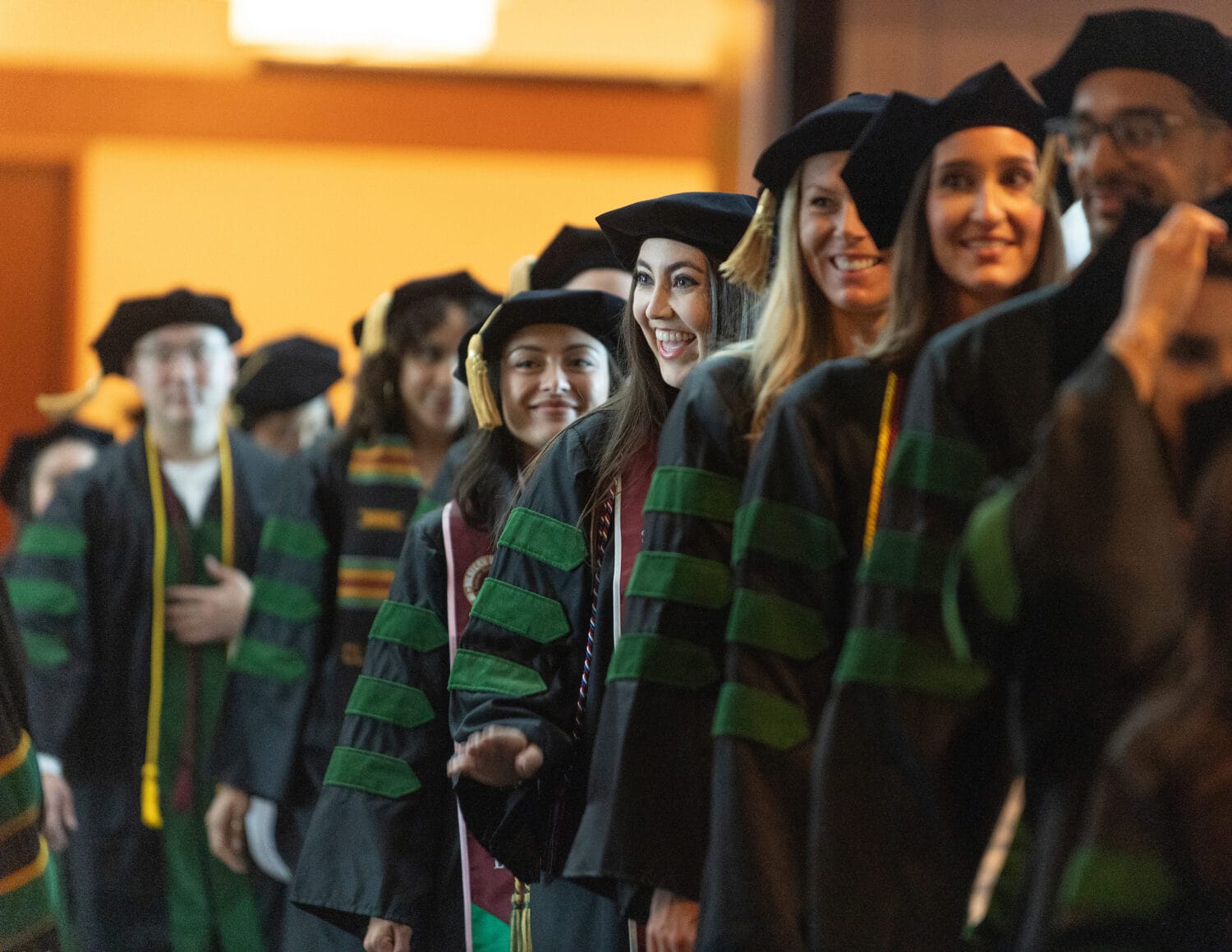Osteopathic Graduate Medical Education 2015 Match Data Continue at High Level, Will Result in More Primary Care Physicians
Western University of Health Sciences’ College of Osteopathic Medicine of the Pacific (COMP) in Pomona, California, and at its sister campus, COMP-Northwest in Lebanon, Oregon, had a 100 percent placement rate as defined by all students eligible for GME in the 2014-15 academic year.
As of May 1, 5,229 of this spring’s expected graduates have matched into GME. There are 5,260 graduates who are seeking GME. All but 31 have matched. Reflecting this trend, a total of 99.41 percent of DO graduates seeking GME in the 2015 overall matching process attained a residency position. Of the 5,260 DO graduates who participated in the 2015 GME match process, 48.37 percent placed into osteopathic GME positions through the American Osteopathic Association (AOA) Intern/Resident Registration Program, and 45.95 percent matched into GME programs through the National Resident Matching Program (NRMP). Additionally, 4.6 percent of the 2015 DO graduates with military service commitments seeking GME were placed in the military match, and the final 7.85 percent matched to other GME positions. (Please visit the AACOM website for an infographic depicting these percentages.)
This year’s match demonstrates osteopathic medical education (OME)’s continuing contribution to the physician workforce, as approximately 60 percent of DO graduates traditionally serve as primary care physicians. As interest in osteopathic medicine continues to grow, osteopathic physicians will continue to transform the future of health care by helping to provide quality patient care for an aging population.
At COMP, 62 percent of the graduating students in 2015 chose to train in primary care fields. At COMP-Northwest, 71 percent chose to go into primary care fields.
Data for this report was provided by COMs as of May 1, 2015, and represents initial figures. Official findings are due January 2016. Look for updates on the 2015 match statistics on http://www.aacom.org.
###
About AACOM
The American Association of Colleges of Osteopathic Medicine (AACOM) was founded in 1898 to support and assist the nation’s osteopathic medical schools, and to serve as a unifying voice for osteopathic medical education. AACOM’s mission is to provide leadership for the osteopathic medical education community by promoting excellence in medical education, research and service, and by fostering innovation and quality across the continuum of osteopathic medical education to improve the health of the American public. AACOM represents the 31 accredited colleges of osteopathic medicine in the United States, which are accredited to deliver instruction at 44 teaching locations in 29 states. In the 2014-15 academic year, these colleges are educating over 24,600 future physicians—more than 25 percent of new first-year U.S. medical students. Six of the colleges are public, and 25 are private institutions.



